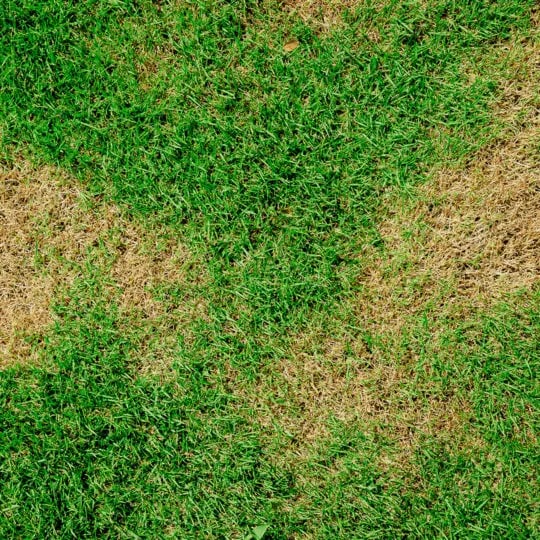5 Most Common Causes of Grass Disease

All living things are prone to disease, and your lawn is no different. Yet lawns do not catch viruses like humans do. Instead, lawns are affected by fungus. The grass of your lawn can contract several common lawn diseases, such as:
- Brown patch
- Dollar spot
- Fairy ring
- Fusarium blight
- Necrotic ring spot
Each of these has its own unique characteristics, and can cause your lawn to become brown, yellow, or filled with mushrooms depending on the disease.
Gaining an Understanding of Lawn Disease
Lawn diseases are caused by two things: contact with a disease (fungus), and weak lawns. If your mower has come into contact with any lawn diseases, it’s important not to use that same mower on your lawn. Yet avoiding lawn diseases can be difficult. It’s more important to avoid weak lawns.
Generally, lawn diseases take advantage of problems with your lawn care. These include:
- Compacted Soil – Children and pets that are often on your lawn can compact your soil. Rain and snow can lead to compacted soil. In some ways even gravity can lead to compacted soil. Compacted soil makes it difficult for roots to grow deeply. The solution to this is to aerate the soil so your lawn roots are able to expand.
- Poor Watering – Watering problems can also lead to lawn diseases. Watering problems include: overwatering, watering too often with less water, and not watering at all. During a drought, it may be harder to remedy some of these issues, but proper watering is crucial for deep roots that can prevent lawn disease.
- Mowing Wrong – Different types of grass have different ideal heights. Know your grass type and its ideal height. You will also need to make sure you’re not damaging the grass during mowing. Keep your blade sharp, and make sure that you’re only cutting off no more than 1/3rd its length at a time.
- Poor Seeding – One secret that lawn care experts have known for years is that your lawn can choke out disease and weeds when there is more grass than your lawn can handle. Though this will need to be combined with things like fertilization, “overseeding” can be a great way to fight off weeds, which in turn will lead to a healthier lawn.
- Non-Grass Thatch – Thatch is organic material made up of twigs, leaves, and other lawn debris. If you have a thick layer of thatch, it can block the sun so that the grass has a difficult time growing. It also creates an environment where the water is on the surface and does not reach the roots. The lawn disease brown back, for example, loves places with a lot of thatch.
All of these are examples of problems that can increase the likelihood of lawn disease. That’s why in Pennsylvania, Delaware, and New Jersey, Green Lawn Fertilizing does its best to help you keep your lawn as healthy as possible so that it can fight off lawn disease all throughout the year. Contact us today to find out more.